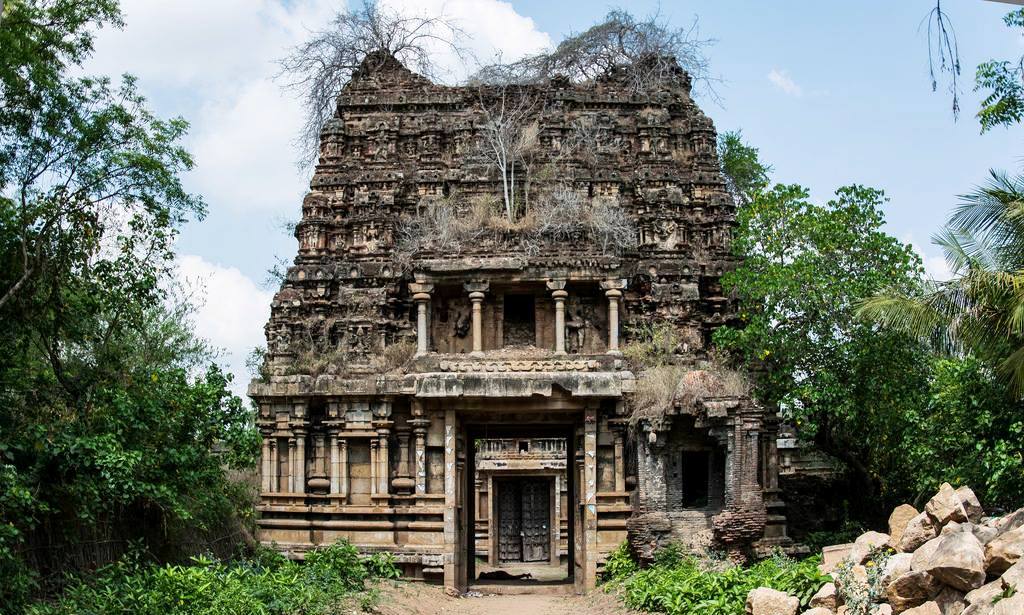Table of Contents

Introduction
The Abathsahayeshwarar Temple, located in Thukkatchi village in Tamil Nadu’s Thanjavur district, is a shining example of India’s rich cultural and architectural heritage. This 1,300-year-old marvel, built during the glorious reign of the Chola dynasty, recently garnered international recognition by receiving UNESCO’s 2023 Award of Distinction for its outstanding conservation efforts. The award highlights not just the temple’s historical importance but also the commitment of local artisans and authorities in preserving this treasure for future generations.
In this blog, we delve into the temple’s historical significance, the meticulous restoration process, and the global recognition it has received, emphasizing why it stands as a beacon of architectural brilliance and cultural preservation.
Historical Significance of the Abathsahayeshwarar Temple
Origins and Chola Dynasty Influence
The Abathsahayeshwarar Temple dates back over 1,300 years and was constructed during the reigns of the prominent Chola kings, Vikrama Chola and Kulothunga Chola. The Chola dynasty is celebrated for its architectural prowess, having created some of the most iconic temples in South India. These kings were instrumental in shaping the cultural and spiritual landscape of the region.
- Vikrama Chozheeswaram was the ancient name of Thukkatchi village, named in honor of King Vikrama Chola.
- Kulothunga Chola Nallur further emphasizes the village’s deep-rooted connections with the Chola dynasty.
The temple features five prakarams (enclosures), a common architectural element in grand South Indian temples. These prakarams symbolize different stages of spiritual progression, and each enclosure offers unique insights into the temple’s layout and design.
Deities and Iconography
The Abathsahayeshwarar Temple is dedicated to Lord Shiva, known here as Abathsahayeshwarar, the protector and savior. The temple also houses several other deities, including:
- Soundaryanayaki Ambal: The consort of Lord Shiva, revered for her beauty and grace.
- Ashtabhuja Durga Parameshwari: An eight-armed manifestation of Goddess Durga, symbolizing strength and protection.
- Aadhi Sarabeshwarar: A fierce form of Lord Shiva established by Kulothunga Chola.
These deities reflect the temple’s spiritual diversity and its role as a center for religious devotion during the Chola period.
The Restoration Process: Reviving a Historical Gem
Condition Before Restoration
Before its restoration, the Abathsahayeshwarar Temple was in a dilapidated state. Time, weather, and neglect had taken a significant toll on the structure. The prakarams were crumbling, and the temple grounds were overgrown with vegetation. The gopurams (temple towers) had lost their vibrant colors, and structural damage threatened the integrity of this ancient site.
Restoration Efforts
The restoration of the temple was an extensive and carefully planned process. The key steps included:
- Clearing Overgrowth: The first task was to remove overgrown plants and trees that were damaging the structure.
- Reinforcing Structures: The two prakarams were repaired and reinforced to ensure stability.
- Repainting the Gopurams: The temple towers were restored to their original vibrancy with fresh coats of paint, honoring traditional color schemes and designs.
- Preserving Craftsmanship: Skilled sthapathis (traditional temple architects and artisans) played a crucial role in the restoration, ensuring that the temple’s intricate details were preserved.
The final step of the restoration culminated in a consecration ceremony held in September 2023, marking the temple’s renewed glory and return to active worship.
UNESCO’s Recognition: A Global Honor
In 2023, UNESCO awarded the Abathsahayeshwarar Temple the prestigious Award of Distinction for its exceptional conservation efforts. This recognition was significant for several reasons:
- Revitalization: UNESCO praised the restoration for breathing new life into the temple, balancing modern conservation techniques with traditional methods.
- Preservation of Heritage: The project highlighted the importance of preserving India’s ancient temples, not just as religious sites but as historical and cultural landmarks.
- Community Involvement: The involvement of local sthapathis ensured that traditional craftsmanship and artisanal skills were honored and passed on to future generations.
- Setting a Precedent: This successful restoration serves as a model for similar projects across Tamil Nadu and beyond.
UNESCO’s recognition brings global attention to the importance of preserving India’s vast and rich architectural heritage.
Government Support for Temple Conservation
The restoration of the Abathsahayeshwarar Temple was supported by the Hindu Religious and Charitable Endowments (HR&CE) Department. Minister P.K. Sekarbabu highlighted the government’s ongoing efforts to preserve Tamil Nadu’s temples. Key initiatives include:
- Annual Allocation: ₹100 crore allocated annually by Chief Minister M.K. Stalin for temple restoration and conservation.
- Future Projects: Identifying and restoring more temples to ensure Tamil Nadu’s rich heritage is preserved for future generations.
This government backing is crucial for the continued preservation of India’s ancient structures, ensuring they remain centers of culture, spirituality, and history.
The Role of Sthapathis: Guardians of Temple Architecture
Who are Sthapathis?
Sthapathis are master temple builders and architects who specialize in traditional Hindu temple construction and restoration. They are experts in:
- Structural Integrity: Ensuring the restored structures are stable and durable.
- Artistic Detailing: Preserving the intricate carvings and decorative elements that characterize Chola-era temples.
- Traditional Techniques: Using age-old methods and materials to maintain authenticity.
Their role in the Abathsahayeshwarar Temple’s restoration was instrumental in preserving the original beauty and craftsmanship of the temple.
Conclusion
The Abathsahayeshwarar Temple in Thukkatchi stands as a testament to the grandeur of Chola architecture and the importance of preserving cultural heritage. The successful restoration and UNESCO’s Award of Distinction not only honor the temple’s historical significance but also showcase the dedication of local artisans, government authorities, and conservationists.
As more temples are identified for similar restoration efforts, the Abathsahayeshwarar Temple serves as a shining example of how modern techniques and traditional wisdom can come together to safeguard our past for future generations.